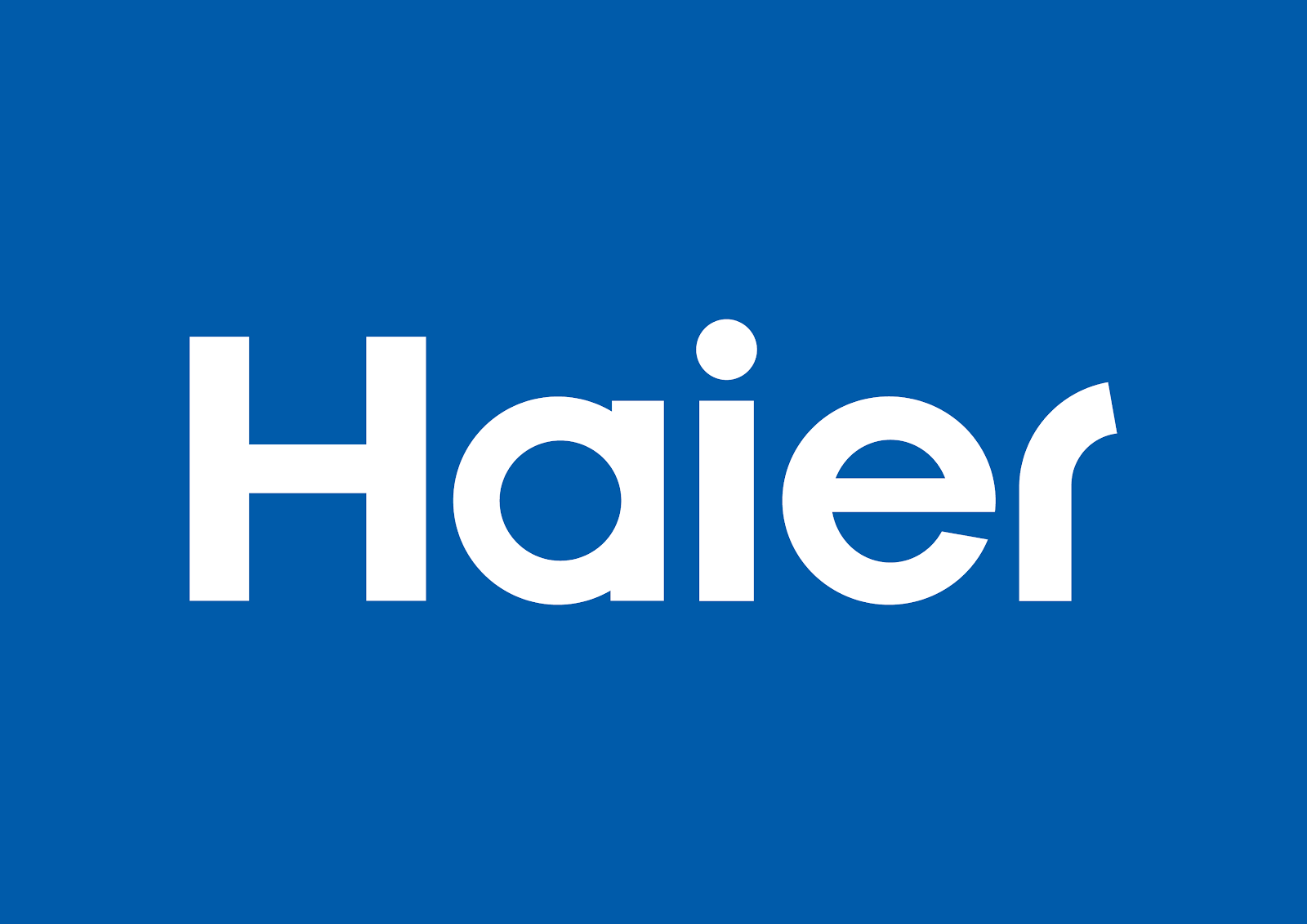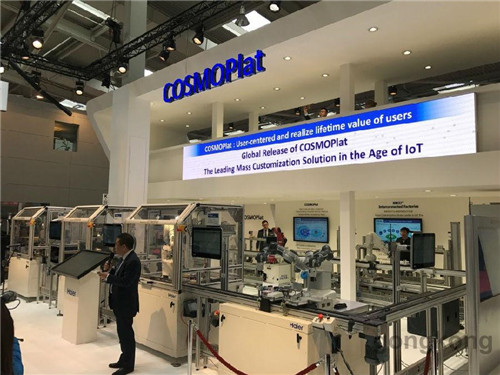Smart technologies on the rise? Here’s how this company prepares for a world of “industrial smart-home architecture!” [Monday: Marketing Marvels]

CHANGE.
This is the major discussion in the World Economic Forum (WEF)’s annual meeting in Davos, Switzerland in 2010.
As mentioned in the event, the internet is creating a “new economy” and the industrial society is approaching a huge turning point―moving towards an internet-based economy.
One of the forum’s messages to businesses and their leaders?
Only by innovating will they be able to catch up with the changing business landscape.
Let’s see what one company does to stay competitive in its field.
Haier Electronics Group Co., Ltd. is a Chinese multinational home appliances and consumer electronics company headquartered in Shandong. It manufactures and sells products like refrigerators, air conditioners, washing machines, microwave ovens, mobile phones, computers, and televisions.

As of January 2021, the company has established 122 manufacturing centers and nearly 240,000 sales networks in 160 countries across the globe.
In the midst of ongoing technological breakthroughs, how is Haier reorganizing its business strategy?
Through the Internet of Things (IoT)!
In case you’re not familiar with the term…
IoT is the network of physical objects embedded with sensors, robotics, and artificial intelligence for the purpose of connecting and exchanging data over the internet.
To adapt to this stage in the business industry and economy as a whole, Haier focuses on developing user-monitoring sensors.
These devices, whether they are incorporated into Haier’s products or not, have the capacity to observe user behavior from different vantage points.
Curious about how this technology works?
Let’s look at it from a specific situation.
In China, Haier connects all its suppliers and customers through a mass customization platform called COSMOPlat.

The purpose of this online platform?
To easily automate every step in the company’s production line!
Let’s use the Yunxi Generation II washing machines as an example to demonstrate the process.

Among Haier’s suppliers are Dalian Eastern Display Company, Diehl Controls, Rold, and Hangzhou Kambayashi Electronics. Each of these companies have their own unique roles in manufacturing this washing machine.
The automation process in COSMOPlat works like this:
A customer places an order and has an option to customize his or her washing machine ⟶ COSMOPlat notifies suppliers for the appropriate components needed ⟶ Haier manufactures the machine as the parts arrive ⟶ Haier delivers the product to the customer ⟶ Haier arranges the product for monitoring and service once it is used.
One advantage of having this system?
A better customer experience and positive feedback on Haier’s appliances!
Here’s another innovative product manufactured by the company: The Tianzun (Heaven) Air Conditioner!

The idea for this technology started when Haier asked a question through the Chinese social media app called Qzone:
“What do you want in air conditioning?”
About 670,000 online users participated in the conversation and their answers were summarized into 3 words: Cool, not cold.
This concept became the tagline of Haier’s Tianzun air conditioner.
Tianzun is a pillar-like device with a small wind tunnel that draws air from the room where it is placed. One of its features is it easily connects to consumers’ smartphones without asking for any password, registration, or verification code.
Users can even control the air conditioner while they’re away, so they arrive home to the perfect temperature!
Another interesting thing about the device is it has a circular light that shifts from red to blue to signify improvements in the air quality.
Since the air in China tends to be dry and dusty, Haier’s innovation captured the attention of many consumers as it increases the comfort they feel in their own homes.
Here’s good news for Apple product users:
The Tianzun air conditioner is the first Apple-certified home appliance after passing the tech giant’s MFi standards for design, quality, and iOS compatibility!
Haier hopes this endorsement will help it connect with more consumers who are looking for a more accessible and less complex home device.
The company is also using this technology on its other products as it plans to develop an “industrial smart-home architecture” that will eventually turn all its home appliance products into internet-connected terminals.
Haier believes all digital technologies should serve and satisfy the needs of consumers’ personalized experiences. This has led to an improvement in the brand’s research and development strategy to stay relevant in an internet-based economy.
In the shift to an IoT economy, Haier ensures that its business models and methods are interrelated in helping it establish a distinctive identity. Although its current operations are a lot different from its traditional processes, it will be more useful in achieving the company’s goals in the long run.
In the past five years, Haier Electronics Group Co., Ltd. has recorded revenues of:
- CNY 62.8 billion in 2015
- CNY 63.9 billion in 2016
- CNY 78.8 billion in 2017
- CNY 76.3 billion in 2018
- CNY 75.9 billion in 2019
Haier’s new approach opens itself up to intensive collaboration with customers and innovators around the world. In the words of Zhang Ruimin, Chairman and CEO of Haier:
“The direct view [consumers] get from our products makes them more responsive, which in turn helps our innovation efforts.”
Haier Electronics Group Co., Ltd.’s Earning Power: Valens Research vs. As-reported numbers
Haier Electronics Group Co., Ltd. (1169:HKG) makes for a great case study that we come back to regularly. One great reason?
The company has proven itself to be a better earning power generator than investors might think.
So, how well has Haier been growing its business in the past years?
The research doesn’t lie—nor do the results. Earning power (the blue bars) continues to show results higher on average than what traditional databases show.

The blue bars in the chart above represent Haier’s earning power (Uniform Return On Assets). Haier has seen generally robust but declining profitability. Its Uniform ROA ranged from 7% to 33% in the past sixteen years, or an average of 20%. Uniform ROA is at 18% in 2019.
The global ROA is just 6%.
The orange bars are the company’s as-reported financial information. If you relied on these numbers, you will see a company with understated profitability. As-reported ROA (return on assets, a measure of earning power) only ranged from 3% to 11% in the past fifteen years. Its ROA in 2019 was only at 4%, far lower than its Uniform ROA in 2019.
That’s what you’ll see in Yahoo Finance, Google Finance, and most other databases.
The company’s stock price also performed better than the rest of the stock market over the decade, which we can see in the blue line in the chart below. Its returns have been well above the market.

The numbers show that Haier has been doing well and making a profit.
With the internet economy in mind, Haier is making innovations based on a business model that helps it adapt to changes in the economic landscape―the Rendanheyi Model.
The model suggests that employees can realize their own value while also creating value for consumers.
Aside from that, the framework is also designed to foster “co-creation and win-win situations” for both the company and its customers.
According to CEO Zhang Ruimin, Haier’s emphasis on “what we can do and who we are” sets them apart from the rest of their competitors.
One of the reasons is…
Rather than focusing on “what we sell and how we make money,” Haier’s mindset shows the capabilities it has to succeed globally.
About The Dynamic Marketing Communiqué’s
“Monday Marketing Marvels”
Too often, industry experts and the marketing press sing the praises of some company’s marketing strategy.
…Only for the audience to later find out that their product was a flop, or worse, that the company went bankrupt.
The true ROI in marketing can’t be separated from the business as a whole.
What good is a marketing case study if one can’t prove that the company’s efforts actually paid off?
At the end of the day, either the entire business is successful or it isn’t. And the role of marketing is always paramount to that success.
Every Monday, we publish a case study that highlights the world’s greatest marketing strategies.
However, the difference between our case studies and the numerous ones out there, is that we will always make certain that the firm really did generate and demonstrate earning power worthy of study in the first place (compliments of Valens Research’s finance group).
By looking at the true earnings of a company, we can now rely on those successful businesses to get tips and insights on what they did right.
We’ll also study the greatest marketing fails and analyze what they did wrong, or what they needed to improve on. We all make our mistakes, but better we learn from others’ mistakes—and earlier, rather than later.
Hope you found this week’s marketing marvel interesting and helpful.
Stay tuned for next week’s Monday Marketing Marvels!
Cheers,
Kyle Yu
Head of Marketing
Valens Dynamic Marketing Capabilities
Powered by Valens Research
www.valens-research.com




